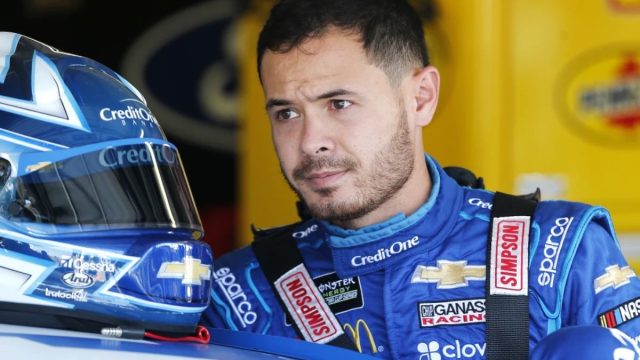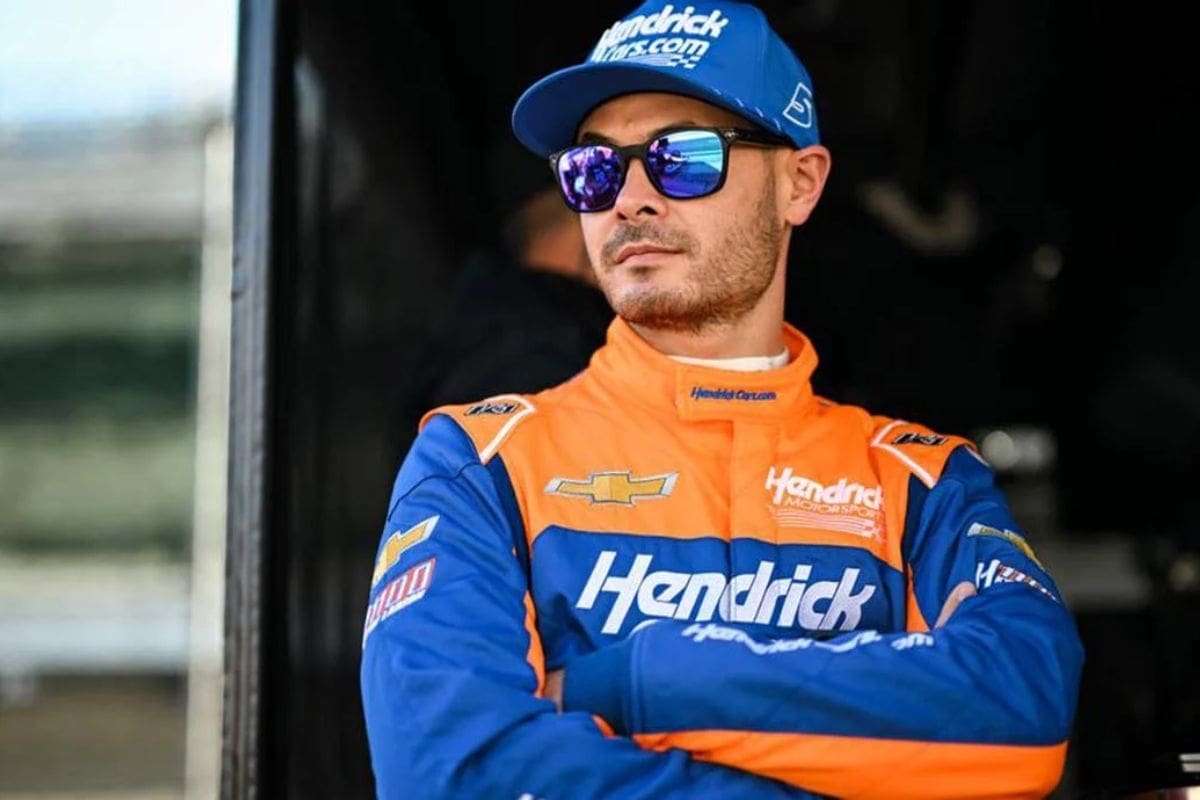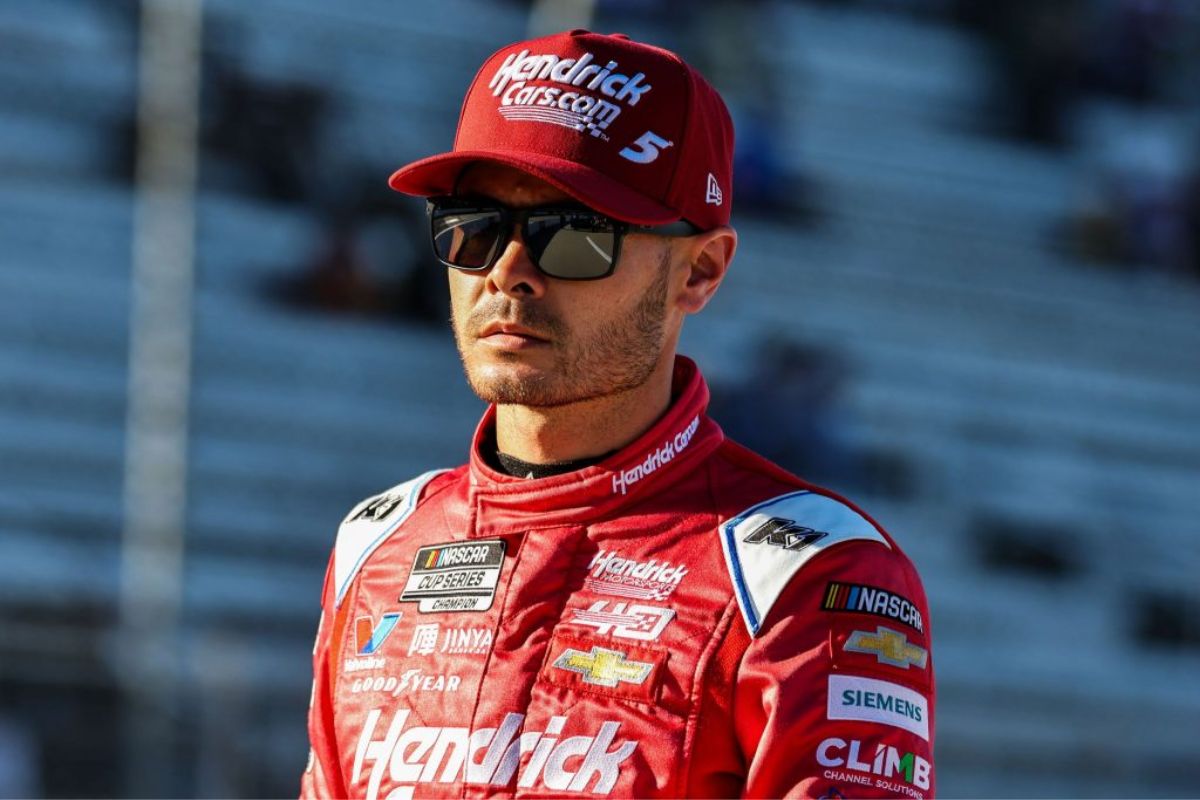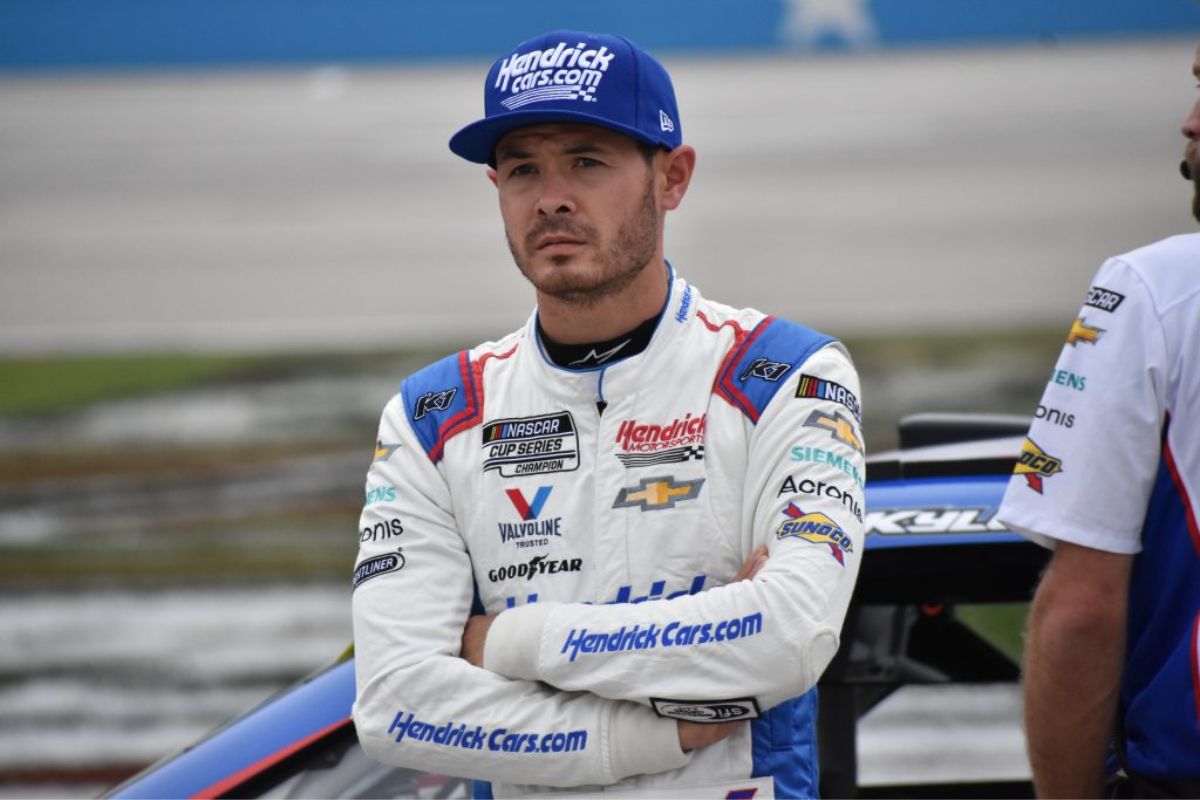Kyle Larson’s Penalty Intensifies: The ejection of Kyle Larson’s car chief, Jesse Saunders, due to unauthorized modifications on the roof rails, serves as a significant moment in not only Larson’s season but also in illustrating the stringent regulatory environment of NASCAR. This penalty, necessitating Larson to start from the back at the GEICO 500, escalates the challenges faced by the No. 5 team. It raises critical questions about the balance teams must maintain between innovation and adherence to NASCAR’s strict regulations.
Key Takeaways
- NASCAR penalized Kyle Larson for unapproved roof rail adjustments, intensifying scrutiny on his team.
- As a consequence of the penalty, Larson’s car chief, Jesse Saunders, was ejected from the race.
- Larson had to start from the last position in the GEICO 500, impacting his race strategy and potential outcomes.
- The ejection of Saunders and starting from the back could affect team synergy and morale.
- Past penalties for Hendrick Motorsports include significant fines and crew chief suspensions, influencing team operations and reputation.
Kyle Larson’s Talladega Troubles
Kyle Larson’s performance at Talladega Superspeedway has been notably hindered this year following allegations of illegal tactics by his team. This setback comes after Larson’s impressive series of pole wins at Richmond, Martinsville, and Texas, where his driving was both aggressive and tactically sound. The recent controversy casts a shadow over his racing integrity and raises questions about the legitimacy of his team’s strategies throughout the season.
The impact of these allegations at Talladega is particularly severe due to the track’s unique demands. Talladega, known for its intense speeds and close-quarter racing, requires not only exceptional driving skills but also a car that is finely tuned to the edge of regulatory boundaries. Any deviation from legal modifications can significantly alter a car’s performance, potentially rendering it less competitive or, conversely, unfairly advantaged.
Moreover, the scrutiny from NASCAR officials and the racing community may lead to a more conservative approach in vehicle setup and race-day strategies by his team. The entire scenario places Larson at a disadvantage not just mechanically but also mentally and strategically, as he navigates the fallout from these allegations amidst the substantial competitiveness of racing.
Larson’s Penalty and Consequences
The recent imposition of a penalty on Larson by NASCAR, which included barring him from qualifying due to unapproved roof rail adjustments, has significant implications for his season’s trajectory and reputation. This disciplinary action places Larson and the Hendrick Motorsports No. 5 team in a difficult position as they navigate the remainder of the racing season. Such penalties are not merely setbacks; they are stark reminders of the regulations governing NASCAR and the high standards expected of all participants.
An update to the Kyle Larson penalty from qualifying. The car chief has been ejected. Larson will also serve a pass-through penalty at the start of the race. There will not be any further penalties.
The No. 5 went through inspection and passed, so it's ready for the race.— John Newby (@JohnNewby_) April 21, 2024
Analyzing the specifics, the penalty for unapproved adjustments is particularly severe because it directly impacts performance capabilities and race day strategies. Roof rack play a critical role in aerodynamics, influencing how air moves over the car at high speeds, which can dramatically affect handling and speed. The decision to modify these components outside the approved specifications suggests a significant risk taken by the team, likely aimed at gaining a competitive edge. However, this move has backfired, spotlighting potential governance issues within the team.
Consequences of the Penalty
Facing severe consequences, Larson’s team encountered significant operational and strategic challenges after the imposition of the penalty by NASCAR officials. The ejection of car chief Jesse Saunders marked a critical blow to the team’s on-track operations. Saunders, instrumental in overseeing the car’s readiness and compliance with NASCAR’s rigorous standards, played a key role during race weekends. His absence from the pit wall means the team must quickly change its approach, redistributing responsibilities among remaining crew members who may lack Saunders’ specialized expertise and experience.
The penalty also placed Larson at a substantial competitive disadvantage by relegating him to the last starting position in the GEICO 500. This not only impacted his race strategy, focusing more on damage control rather than peak performance but also affected his positioning in the championship standings. Starting from the back of the pack in a high-stakes race like the GEICO 500 requires a cautious approach to avoid early incidents, which contradicts Larson’s typically aggressive driving style.
“We felt like to keep the garage on a level playing field, the competition level where it needs to be, all the dialogue that went around this car last year working with the owners on what the deterrent model should be, we were put in a position that we felt there was no other way but to write a penalty.”-Elton Sawyer
Past Incidents and Hendrick’s History
Reflecting on Hendrick Motorsports’ recent history reveals a pattern of significant penalties, highlighting the broader challenges faced by teams in maintaining NASCAR’s stringent competition standards. This year’s penalty involving Larson’s crew chiefs is not an isolated incident but part of a concerning trend for the team, which seems to grapple recurrently with the delicate balance of innovation and regulation.
The most notable incident occurred in March 2023 when Hendrick Motorsports faced their severest penalty yet. The infraction centered around unauthorized modifications to hood louvers, critical components mandated to adhere to NASCAR’s rigorous single-source parts policy. This situation emphasizes the significant consequences in NASCAR’s technical compliance, where even minor deviations can lead to substantial outcomes.
- Penalty Magnitude: The modification of hood louvers led to a historic financial and operational penalty for the team.
- Crew Chief Suspensions: Both the primary and substitute crew chiefs faced suspensions and hefty fines, disrupting the team’s strategic operations.
- Reputational Impact: Each penalty not only affects the team’s standings but also its reputation for compliance and innovation within the NASCAR community.
- Technical Scrutiny: Post-penalty, the team undergoes heightened examination, impacting their approach to car setups and race strategies.
- Financial Strain: The fines imposed strain the team’s budget, potentially affecting other areas of development and preparation.
News in Brief: Kyle Larson’s Penalty Intensifies
The ejection of car chief Jesse Saunders and subsequent starting position at the rear of the GEICO 500 exacerbate the challenges faced by Kyle Larson and his team. These penalties underline the stringent regulatory environment of NASCAR and its impact on team dynamics and competitive performance.
The incident not only disrupts immediate race strategy but also serves as a cautionary tale for teams regarding adherence to NASCAR’s modification protocols, thereby influencing future compliance and strategic planning in the sport.
Our Reader’s Queries
Q. Why is Larson a lap down?
A. NASCAR dropped a ruling: Larson was deemed ineligible to hit the track for qualifying due to unapproved adjustments to the roof rail on his No. 5 Chevrolet Camaro ZL1. The hiccup was spotted as the car rolled out for Busch Light Qualifying on Saturday morning, throwing a wrench into Larson’s plans.
Q. Did Larson get a penalty?
A. A rough start for Kyle Larson at NASCAR’s Talladega race: he’s been handed a pre-qualifying penalty, relegating him to start from the back of the pack. Larson’s quest for a fourth consecutive pole position in the Cup Series came to an abrupt halt as he faced the setback just before the start of Saturday’s qualifying session at Talladega Superspeedway.
Q. What ethnicity is Kyle Larson?
A. Back in 2013, Larson clinched the Nationwide Series Rookie of the Year title with an impressive track record: 9 top 5 finishes and 17 top 10 finishes. This milestone not only marked his success on the circuit but also made history as he became the first Asian-American and Drive for Diversity participant to snag such an accolade in one of NASCAR’s national touring series.
Q. Who owns Kyle Larson Sprint car?
A. Kyle Larson Racing, formerly known as Larson Marks Racing, revs up as an American sprint car and midget car racing outfit. Behind the wheel of this operation is none other than NASCAR driver Kyle Larson himself, who takes the reins as the team owner.
ALSO READ: Kyle Larson’s NASCAR Suspension: The Birth of a Dominant Era!



